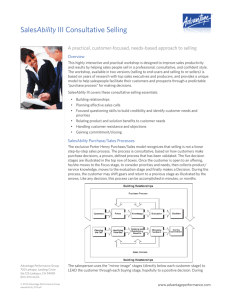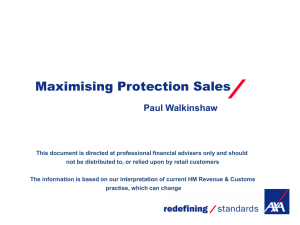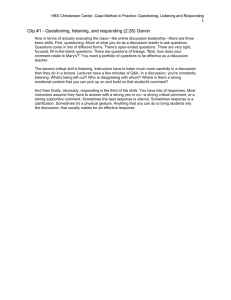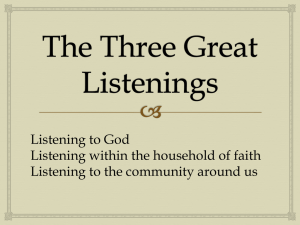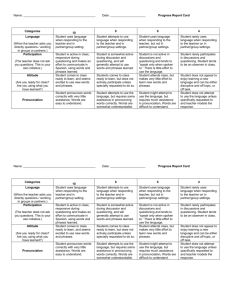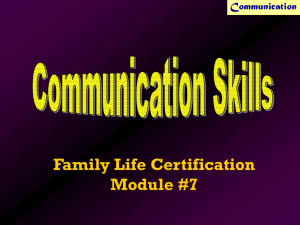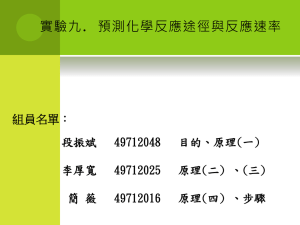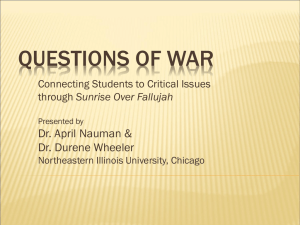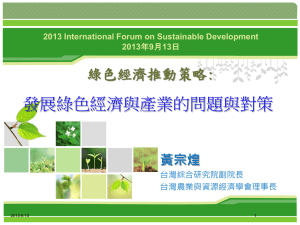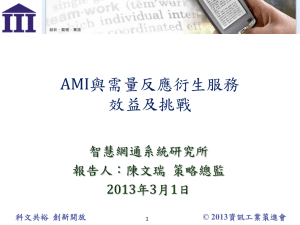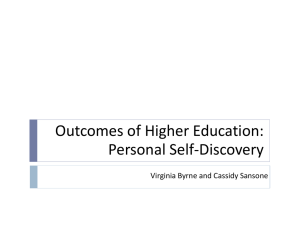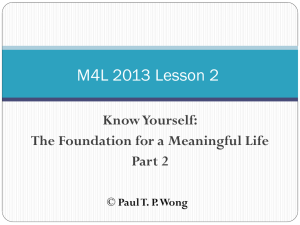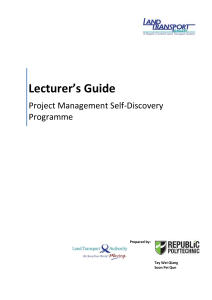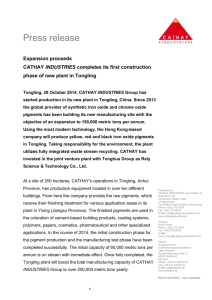公司旗下之敏盛醫療體系各事業單位
advertisement
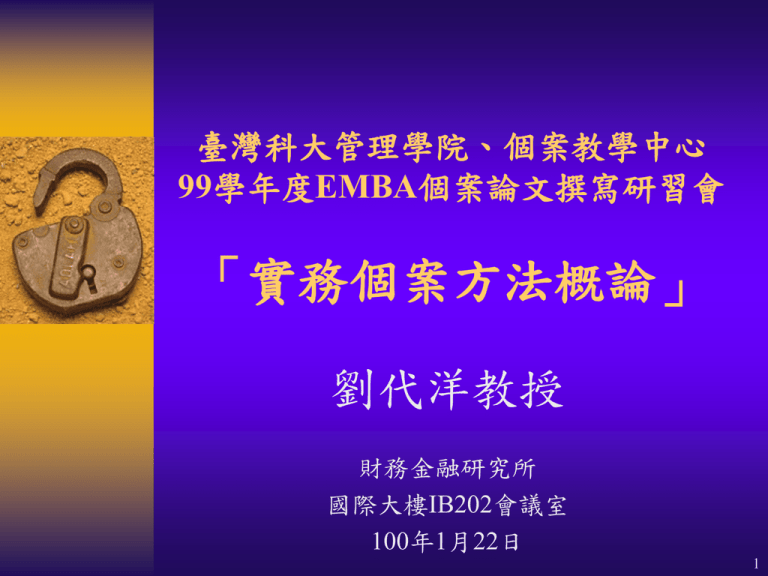
臺灣科大管理學院、個案教學中心 99學年度EMBA個案論文撰寫研習會 「實務個案方法概論」 劉代洋教授 財務金融研究所 國際大樓IB202會議室 100年1月22日 1 簡報大綱 管理決策 議題設計 –哈佛個案撰寫架構 討論設計 –以「敏盛醫療體系藥品採購年度議價實施 效益之研究」為例 個案教學與參與式學習法精髓 2 管理決策要訣 關鍵的破題(Opening Question) 個案內容的關鍵議題 增加討論空間 內容愈精簡愈佳 一、採購管理個案撰寫架構 依據哈佛個案所歸納出的採購個案撰寫架構 –關鍵管理決策 –個案公司簡介(成立時間、財務數據、採購管理相 關主題之公司現況) –採購管理主題專案實施前、實施過程及具體架構 –專案實施後之衝擊與效益 –未來規劃 4 二、哈佛個案架構案例 Case1: Boeing Australia Limited – 關鍵管理決策(p.1) – 公司簡介(p.2) – 客戶策略(p.3) – 採購e化資訊系統建置 – 短期效益(p.p.6~9) – 未來規劃 Case2: e-Procurement at Cathay Pacific Airways – 關鍵管理決策─有人質疑e化 成效並要求進行評估(p.1) – 公司介紹/e化專案(CXeBuy) 介紹(p.2) – 採購e化前狀況(p.3) – CXeBuy – 採購e化之過程具體步驟(5大 步驟)(p.p.5~7) – 衝擊(p.7) – 未來規劃(p.p.8~9) – 採購e化之效益評估(p.9)(p.11 評估方法)(p.12建議評估方法 採平衡計分卡) 5 二、哈佛個案架構案例 Case3: Cathay Pacific: Doing More with Less – 關鍵管理決策(資訊作業系統 外包)(p.1) – 公司介紹(p.2) – 初期資訊作業系統狀況(變動 前)(p.2~3) – 外包決策時點之困境 (additional) – 外包之重點工作 ( 合 約 、 重 點 項 目 、 infrastructure、applications) – 成本高低 – Data center、Desktop外包 – 主電腦系統設置地點成本之 – 公 司 內 部 I.T. 部 門 之 變 化 差異→H.K.最貴 – 外包決策(p.4) (p.p.10~13) – 未來規劃(p.p.14~17) – 外包決策6大項(p.4) – 外包決策3大原則(p.5) 6 二、哈佛個案架構案例 Case4: Offshoring at Global Information Systems, Inc. – 關鍵管理決策(3,000名電腦程式設計工作外包→移到境外) – 境外外包介紹(p.2 India)(p.3 歐美) – 境外外包之衝擊(政治面、失業、成本節省) 7 三、個案撰寫執行步驟 選定採購管理主題 選定個案公司 針對各案公司所有相關資料進行地毯式閱讀 找出個案公司關鍵採購管理決策,必須切合主題 依據採購管理個案撰寫之架構,擬定訪談大綱,進行 個案訪談 8 以「敏盛醫療體系藥品採購年 度議價實施效益之研究」為例 9 敏盛醫療體系藥品採購年度議價 實施效益之研究 關鍵管理決策 個案公司簡介 採購管理主題專案實施前、實施過程及具體架構 – 新策略實施前公司的採購策略 – 新採購策略的規劃 – 新採購策略的執行與遭遇到的困難及因應 10 敏盛醫療體系藥品採購年度議價 實施效益之研究 新採購策略的規劃 • ABC分類(其中A類) • 網路公開招標 • QCDS (Quality, Cost, Delivery, Service)供應商評比 • 藥品競爭比價 •有利合作條件爭取回饋 折扣 •財務配合改變付款條件 •發揮最高主管力量 •藥事管理委會內部協商 •長期合約保障貨源與穩 固利潤 11 敏盛醫療體系藥品採購年度議價 實施效益之研究 本採購策略實施後之效益 – 超越本年度採購目標,成本下降近5% – 供應商整合與合約關係建立 – 建構完整藥品資料庫 未來規劃 – 取得更多市場價格 – 提昇市場力量 – 成為多樣化健康產品代理商 – 提升內部其他專業人員採購成本概念 12 表1、敏盛醫控(股)公司旗下之敏盛醫療體系各事業單位 事業單位 位置 策略宗旨與發展特色 敏盛綜合醫院 經國總院 成立於2001年,定位為醫學中心級的廿一世紀新醫 院。以卅五億的預算,斥資興建600床之準醫學中心, 建坪 。打造全科綜合醫院,因為地處國門所在,將來 桃園市 在兩岸醫學交流與國際化的趨勢上有極佳的發展條件 另外因位於桃園三大國道交流道要衝,更將在大桃園 地區醫療服務辦演重要角色。 敏盛綜合醫院 三民院區 三民長期照護 中心 成立於1981年,設置國人健檢中心,隨著經國院區 的落成,三民院區各設設施及人力大部份遷移於新院 桃園市 區,原院區成立三民院區門診部、呼吸照護中心及慢 性照護中心等,剩餘空間供研究教學之用。目前為區 域教學醫院。 怡仁綜合醫院 成立於1996年,配合衛生署醫療網,指定設置楊梅 區域醫院,定位成全國皆知的『觀光級醫院』。秉持 桃園縣 對生命的關懷與尊重,提供人生全階段的健康守護, 楊梅鎮 是怡仁分院的經營理念,不惜鉅資引進高科技醫療儀 器,使醫療照護具專業性及整体性,樹立『親切』、 『愉快』、『活力』的風格。目前為地區教學醫院。 13 表1、敏盛醫控(股)公司旗下之敏盛醫療體系各事業單位 事業單位 位置 敏盛綜合醫院 桃園縣 龍潭院區 龍潭鄉 敏盛綜合醫院 桃園縣 大園院區 大園鄉 怡德養護中心 桃園縣 怡德長期照護 龍潭鄉 中心 策略宗旨與發展特色 成立於1990年,懷抱著『醫師下鄉』及『民眾為敏盛是賴』 的精神,在醫療資源尚不充沛的龍潭地區,為民眾提供及 時、就近的醫療服務。目前為地區教學醫院;150床,配合 北二高開通發展南區要道,提供車禍急救服務。 成立於1992年,桃園縣沿海長年來由於社會轉型、農村人 口外流、公共醫療設施落後,醫療資源需求殷切;有鑑於 此,斥資興建分院為沿海四鄉民眾提供最完善的醫療服務。 由於緊鄰大園及觀音工業區,大園分院也積極發展職業醫 學,增加設備,提供工業區內勞工之健康檢查、治療及追 蹤等服務,朝『工業健康中心』方向邁進。目前為地區教 學醫院;120床,。 「榕園健康園區」是敏盛醫療體系為擴大服務鄉親的深 度與廣度,而設立的機構,座落在山明水秀遠近馳名石門 水庫風景區附近,佔地寬廣,空間設計極具匠心,相信絕 對是一處值得每一位鄉親信賴的老人照護機構。期能加強 吸收本國照顧服務人力,降低對外籍工作人員的依賴,並 成為縣內服務指標,落實在地老化之目標。 14 表1、敏盛醫控(股)公司旗下之敏盛醫療體系各事業單位 事業單位 位置 策略宗旨與發展特色 除了提供基本醫療服務外,為了推動及建立民眾參與社 區健康活動,將和當地衛生所及學校社區結合,給予民眾 相關健康衛教及指導,提升民眾自我健康的維護與促進的 桃園縣 態度,落實社區健康自我管理之模式,全面促進社區民眾 大溪健康園區 大溪鎮 身心之健康,以達到「健康生活化、生活健康化」的目標, 對未來大溪人的整體健康的提升將有重大的影響。200床, 獲得衛生署95年度照護安養評鑑獲之乙等評鑑。 盛弘醫藥 (股)公司 提供全面完整之專科健檢服務以及影像醫學服務。未來 桃園市 將納入醫藥品採購服務等擁有整合性效益之營業項目。 是一結合整形、美容、SPA的全方位醫學美容中心。提 供專業醫師、顧問以及服務團隊,藉由凝聽、了解客人的 敏盛醫學美容 桃園市 切身需求及生活型態,提供一套最好且最容易取得的解決 中心 方式,來滿足客人的需要及期望,並且幫助他們提高自信 及生活品質。 資料來源:敏盛醫控公司 15 表2、九十四年度敏盛醫療體系經國院區就診人數及收入 就診人數 門診人次 73,111,243 業務收入 住院人次 167,394 總收入(新台幣,元) 2,653,000,000 稅前損益(新台幣,元) 10,265,000 資料來源:敏盛醫控公司 16 評分單位 評分日期 廠商代號 表 3 、 QCDS 供 應 商 評 分 表 Yxx-xx Pxxxx Sxxx Gxx Mxx Gxxxxx Dxxx Hxxxx Dxx Fxxxxx Jxxxx Axxxxxx Axxxxxxx Txxx Zxxxxx Pxxx Cxxxx Dxxxx Rxxxx Sxxxxx Pxxxx Quality 40% 品質/審查 8 8 5 7 8 7 9 4 6 4 7 7 Cost 30% 成本/毛利 8 7 7 8 8 8 8 6 7 7 8 5 B分院藥庫 06'/05/11 Delivery Service 20% 10% 配送 服務/彈性 8 8 5 8 8 9 6 7 6 7 6 5 8 8 8 7 5 7 6 9 6 6 6 6 總分 32 28 29 28 29 26 33 25 25 26 27 24 8 8 8 6 30 6 6 6 9 4 6 6 7 8 8 8 8 5 7 7 6 9 5 8 8 8 6 6 6 9 5 7 7 7 7 6 9 32 24 29 32 24 26 25 28 資料來源:敏盛醫控公司 17 採購項目分析及其採購策略 高 採 購 風 險 關鍵性藥品 策略性藥品 •稀少來源,容易短缺 •獨特規格(專利期內) •使用頻率不固定 •不可預測 •替代品難取得 •絕對不可缺 •獨特規格(專利期內) •廠商為數不多 •轉換困難 •替代品難取得 減少供應風險 簽訂長期合約 長期關係經營 策略聯盟 一般性藥品 槓桿性藥品 •標準規格(過專利期) •供應商眾多 •替代品易取得 •使用量大(過專利期) •少許競爭供應商 •替代品可取得 講求經濟效益 改善運籌成本 善用競爭比價或合分合策略 簽訂短期合約 低 低 採購金額 高 18 Getting the Support You Want for Casewriting “Too early to begin working on” “Too late to do anything about” ID: 120168, Published in The New Yorker December 6, 2004 August 16, 2005 PCMPCL 19 Development Requirements Analytics Games/Computers High awareness incident Broad experience Defined purpose Interview & writing + visualizing & edit + visual story telling Interpersonal encounters Relative low High Very low Relatively low Medium High Very high Very high Very low 20 The structure of learning Integration Specific Knowledge Specific Knowledge Specific Knowledge Specific Knowledge Specific Knowledge An Appetite for the subject 21 Scope of Management Education Knowledge… Information Skills •Theory, frameworks, tools •Various functions …..business •Organizational design •Broader environment Attitudes and Worldview •Analytical •Opportunity identification •Pattern recognition •Visioning alternatives •Setting priorities •Action planning •Integration of functions •Understanding the systemic Listening, speaking, persuading Interpersonal and group effectiveness •leadership •Courage to act •Acceptance of responsibility •Quiet confidence •Comfort with ambiguity •Comfort with incompleteness •Willingness to work •Empathy •Assumptions about humans nature, corporate purpose, leadership responsibilities •Predisposition to learn •Imagination and vision 22 Why do we use cases for teaching? Realism (credibility) Memorable (30 years ) Context for barriers/limitations discussion Self-discovery Concise and comprehensive A mid-term and final exam based on the cases are required and graded carefully 23 Participant-Centered Learning and the Case Method A focus on the learning/development needs of participants Participants bring to the program/ course/class The reconstruction of existing mental models…the development of skills…an ‘examination’ of assumptions and beliefs and attitudes… the development of courage, judgment, quiet confidence Participants are actively engaged in the learning process A focus on learning (not on the teaching ) 24 A Case Should Be “Bigger” than the case itself “Inspirational” “Sticky” (memorable) 25 Most important considerations in Designing a Course Students’ expectations theoretical frameworks Teaching objectives Position in curriculum Faculty skill (experience) Student future career Time of course duration Time available to develop materials and your budget of time/effort How to combine generic content with local content? 26 Step-by-step process or designing a course Students’ feedback on inadequacy of current curriculum Type of students who will take the course Skills of the faculty members Course objectives Logical sequence Evaluation of both the content and the way it is conducted 27 Question to ask when designing the course What are the main learning objectives of the course? What skills, abilities or qualities will the course help students develop? What big questions will the course help students answer? What mental models are students likely to bring with them that I will want them to challenge? -How will I encourage my students’ interest in these questions? 28 Question to ask when designing the course What information will my students need to understand in order to answer the important questions of the course and their assumptions? How to sequence the content and discussion from class-toclass in a coherent flow that is clear and understandable? What are the 1-2 main learning objectives for each class? What teaching methods and materials are most effective for each class? Will they capture the interests of the students. 29 What is the relationship between teaching case and research article? Case: Explore; identifying issues of importance Broad Qualitative Identify underlying variables for future hypotheses Inductive External validity (does it matter?) How to solve the problem? – purpose practical Paper: Systematically test hypotheses Narrow, specific; Quantitative Limit to a few relationships for a theoretical model Deductive How to make contribute to the literature? purpose more theoretical - 30 Things that facilitate the learning? Coming prepared Meeting for group discussions participating in class Self-discovery taking time (10-15 minutes) after each class, what I can learn from the class if you turn in anything in written, I will comment on that, but not graded it; and will not count on that for anything (but usually only a dozen of the 90 who do that ) if you do not understand about something, ask a question; if not, come and see me or send me an e-mail if you have a special case or situation, let me know in advance 31 Things that distract the learning? Showing respect for other people Be on time; ready to stay through the class If a student leaves in the middle, will ask the student if he/she feel ok or anything bothering them Self-discovery Absences have to be notified in advance Tell me before the class starts if you fail to read the case Minimize eating and drinking in class No hats in class 32 Questioning , Listening , and Responding Questioning Objectives of asking questions Questions to avoid Concerns Good types of questions Opening questions 33 Questioning , Listening, and Responding Listening Original thoughts Logics between points Connections between comments Links to the flow of the plan Specifics/experience (possible links to the framework) Whether students listen to other people’s comments Whether students have kept up the speed Understand the students’ attitude toward learning 34 Questioning , Listening , and Responding Responding Agree or disagree with a comment Reinforce students’ opinions by offering own opinion Probing for more questions, encouraging deeper understanding; soliciting more simply by asking why? Solicit opinions/reasons from other students – asking the whole class or another specific student for more questions Positive reinforcement 35 如何準備個案教學 慎選個案準則 符合課程需要的內容 考慮教學的對象 個案內容架構系統化 提供許多供討論的潛在問題 36 課程規劃技巧 個案內容切割成不同的段落模組 找出不同模組的辯論議題 不同模組辯論議題之時間安排 思考融入學生意見,黑板呈現何種面貌 37 個案內容愈短愈佳 ( Less is More ! ) 個案內容愈短,愈有必要抓住議題重點 不同模組辯論議題愈少,個案內容愈能 討論和深入分析 38 其他重要議題 Lecture v.s. Case Teaching Plans 協助學生學習 個案指定問題(Assignment Questions)之擬 定 黑板之呈現 39 教學技巧 個案參與式學習法著重理論與實務的結合,以 及針對個案實務性的問題,透過各種相關理論 和知識,深入探討和分析實務問題,研判個案 公司之行為模式。 上課學生實務經驗愈豐富,個案引用數目愈多。 MBA課程,上課教師主要講授個案的“應用” 層面,“方法論”本身主要由學生分組討論獲 知。 博士班課程,上課教師前半段講授“方法論”, 後半段則著重於個案的“應用”層面。 40 教學技巧 個案教學法中,學生不被視為“顧客”, 教師講授學生應該知道的內容,而不是 學生喜歡的內容。 教師上課重在激勵學生積極參與討論與 評量學生上課表現。因此課前準備和上 課參與討論同等重要。 個案學習之成敗,端賴主客觀條件和軟 硬體設施的整體配合。IT設備尤其重要。 41 教學技巧 擬定個案討論之指定問題 (assignment questions) 以“學生”為中心,重在討論問題,不 一定要給答案 塑造學生積極參與討論的氣氛和環境 運用黑板彙整討論重點 保留最後10分鐘作總結 42 教學技巧 Questioning-Listening-Responding個案三步曲 擬定不同構面之問題:開放式或縮小範圍 教師仔細聽學生發言,以引導進一步討論問題 激起學生繼續討論 討論問題三大特性: – A set of instructions – Open v.s. Closed Questions – 儘量避免激化個人之問題 角色扮演(Role Play) 43 傾聽學生發言 仔細聽學生發言內容 留意說話的表情與表達方式 注意聽那些學生未說出來之問題 注意聽取雙方不同之意見,再相互交叉討論 抓住學生說話重點,加以回應並進一步闡述 矯正學生間討論之誤解 善用黑板改變議題 經常肯定學生發言和討論內容 44 感謝各位的悉心聆聽 Q&A 45

